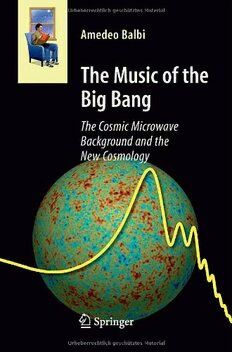
The Music of the Big Bang: The Cosmic Microwave Background and the New Cosmology (Astronomers' Universe) PDF
167 Pages·2008·2.667 MB·English
Most books are stored in the elastic cloud where traffic is expensive. For this reason, we have a limit on daily download.
Preview The Music of the Big Bang: The Cosmic Microwave Background and the New Cosmology (Astronomers' Universe)
Description:
The cosmic microwave background radiation is the afterglow of the big bang: a tenuous signal, more than 13 billion years old, which carries the answers to many of the questions about the nature of our Universe. It was serendipitously discovered in 1964, and thoroughly investigated in the last four decades by a large number of experiments. Two Nobel Prizes in Physics have already been awarded for research on the cosmic background radiation: one in 1978 to Arno Penzias and Robert Wilson, who first discovered it, the other in 2006, to George Smoot and John Mather, for the results of the COBE satellite. Most cosmological information is encoded in the cosmic background radiation by acoustic oscillations in the dense plasma that filled the primordial Universe: a "music" of the big bang, which cosmologists have long been trying to reconstruct and analyze, in order to distinguish different cosmological models, much like one can distinguish different musical instruments by their timbre and overtones. Only lately, has this amazing cosmic sound been unveiled by such experiments as BOOMERANG and MAXIMA and, more recently, by the WMAP satellite. This led to a giant leap in our understanding of the Universe, but the investigation is not over yet. The book focuses on how the exploration of the cosmic background radiation has shaped our picture of the Universe, leading even the non-specialized readers towards the frontier of cosmological research, helping them to understand, using a simple language and captivating metaphors, the mechanisms behind the Universe in which we live. "This non-technical tour of the discovery and significance of the whispers of creation, the fossil radiation from the Big Bang, is a delight to read." Prof. Joe Silk, University of Oxford, a pioneering contributor to understanding the structure of the cosmic background radiation.
See more
The list of books you might like
Most books are stored in the elastic cloud where traffic is expensive. For this reason, we have a limit on daily download.
